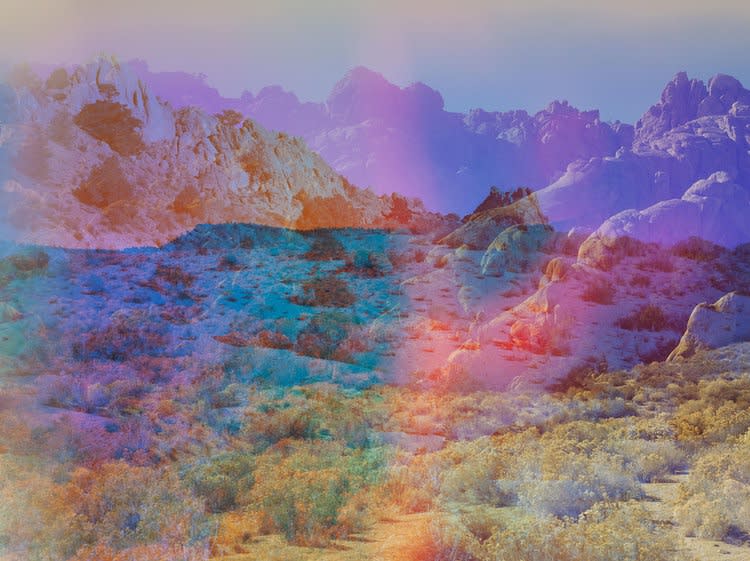Terri Loewenthal’s colorful visions are grounded in – and radically riff on – the photographic expeditions of post-Civil War US Geological surveys, which had many now-controversial goals. On one level, newly gathered information might help industrialists better understand – and subdue – the vast terrain between the growing nation’s eastern and western shores and properly feed an increasingly hungry consumer economy. On another, to help “secure” the land and fully realize Manifest Destiny’s mandate, governmental agencies used survey information to envision future European-settler civilizations. Photography was a tool to meet both of these ends and visually justify their explorations and conquests.
Oakland-based Loewenthal is an explorer with a different, often psychedelic approach. Regular excursions to remote inland regions – complete with a fully-loaded photographic equipment kit – serve as retreats from the demands of urban life and opportunities to explore both the land and the technical modifications to her camera that enable her hallucinogenic compositions.
Her photographs are achieved in-camera, not in post-production, through a process she keeps a mystery. In our current, information-dense state, not easily recognizing how Loewenthal arrives at the final product intensifies the alchemical magic that so enthralled early photography enthusiasts and audiences.
Scanning each vibrant surface for usable information, we identify recognizable elements: sand dune, valley, canyon wall, forest. Those elements are discernible, but their presentation defies the perceptual and cognitive organizational schemas we’ve developed over time. Psychscape 69 (Tonopah, NV), proposes sand dunes superimposed over a scrub brush desert, while Psychscape 41 (Lundy Canyon, CA) envisions a steep canyon wall looming over ancient mountain tops. In each composition, reassuring markers signaling the fore-, middle and background fold into the frontal plane, and relatable color palettes are abandoned.
Without knowing the topographic features that distinguish one location from another, it’s practically impossible to name the regions we see in each image. Loewenthal’s kaleidoscopic compositions ultimately restore mystery to a perennial photographic subject and deny our visual ownership of natural spaces.


